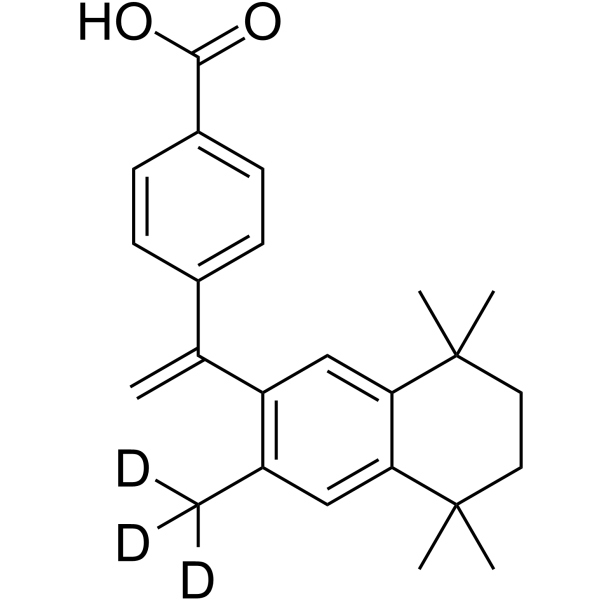Bexarotene-d3
Modify Date: 2024-01-01 19:20:37

Bexarotene-d3 structure
|
Common Name | Bexarotene-d3 | ||
|---|---|---|---|---|
| CAS Number | 166175-35-5 | Molecular Weight | 351.50 | |
| Density | N/A | Boiling Point | N/A | |
| Molecular Formula | C24H25D3O2 | Melting Point | N/A | |
| MSDS | N/A | Flash Point | N/A | |
Use of Bexarotene-d3Bexarotene-d3 (LGD1069-d3) is the deuterium labeled Bexarotene. Bexarotene (LGD1069) is a high-affinity and selective retinoid X receptors (RXR) agonist with EC50s of 33, 24, 25 nM for RXRα, RXRβ, and RXRγ, respectively. Bexarotene shows limited affinity for RAR receptors (EC50 >10000 nM). Bexarotene can be used for the research of cutaneous T-cell lymphoma[1][2][3][4]. |
| Name | Bexarotene-d3 |
|---|
| Description | Bexarotene-d3 (LGD1069-d3) is the deuterium labeled Bexarotene. Bexarotene (LGD1069) is a high-affinity and selective retinoid X receptors (RXR) agonist with EC50s of 33, 24, 25 nM for RXRα, RXRβ, and RXRγ, respectively. Bexarotene shows limited affinity for RAR receptors (EC50 >10000 nM). Bexarotene can be used for the research of cutaneous T-cell lymphoma[1][2][3][4]. |
|---|---|
| Related Catalog | |
| In Vitro | Stable heavy isotopes of hydrogen, carbon, and other elements have been incorporated into drug molecules, largely as tracers for quantitation during the drug development process. Deuteration has gained attention because of its potential to affect the pharmacokinetic and metabolic profiles of drugs[1]. |
| References |
| Molecular Formula | C24H25D3O2 |
|---|---|
| Molecular Weight | 351.50 |